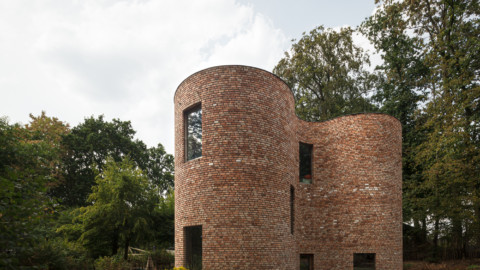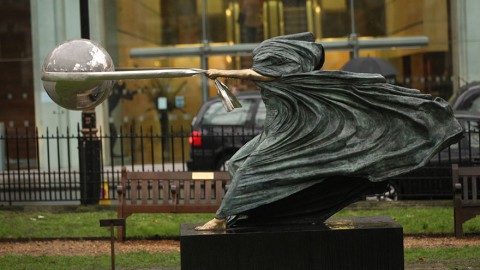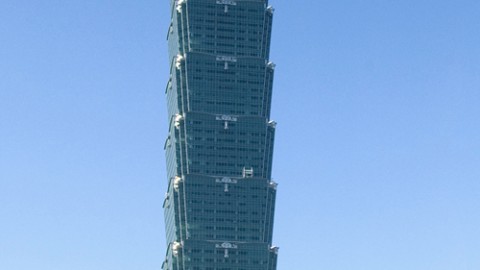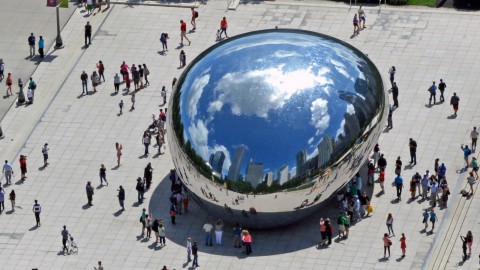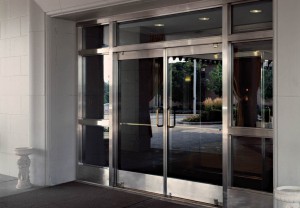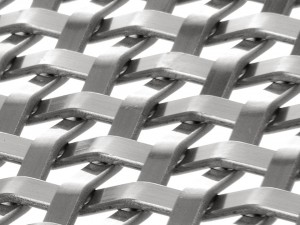Pena Palace in Sintra 辛特拉的佩納宮
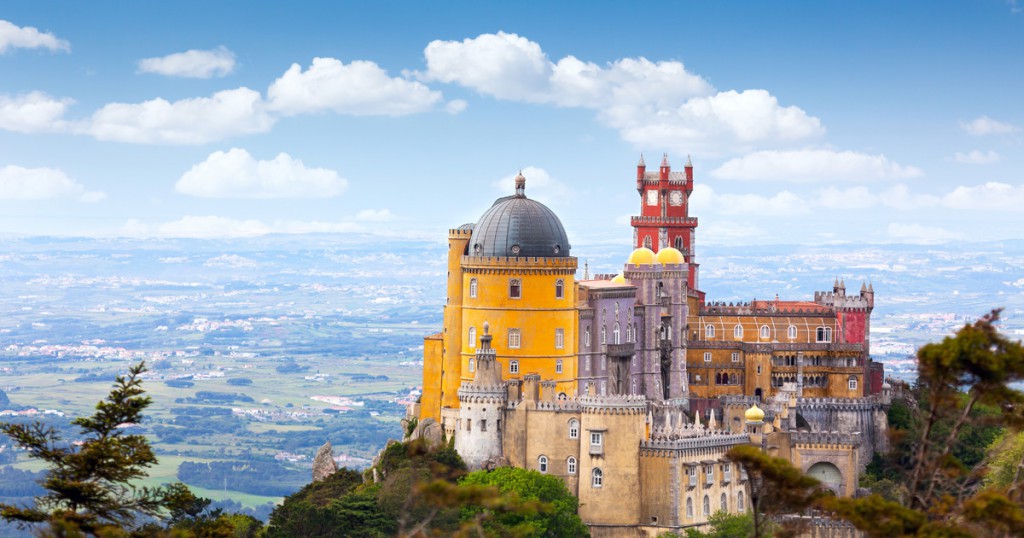
The Pena Palace (Portuguese: Palácio da Pena) is a Romanticist castle in São Pedro de Penaferrim, in the municipality of Sintra, on the Portuguese Riviera. The castle stands on the top of a hill in the Sintra Mountains above the town of Sintra, and on a clear day it can be easily seen from Lisbon and much of its metropolitan area. It is a national monument and constitutes one of the major expressions of 19th-century Romanticism in the world. The palace is a UNESCO World Heritage Site and one of the Seven Wonders of Portugal. It is also used for state occasions by the President of the Portuguese Republic and other government officials.
佩納宮(葡萄牙語:PaláciodaPena)是位於葡萄牙里維埃拉辛特拉市SãoPedrode Penaferrim的浪漫主義城堡。 城堡位於辛特拉鎮上方辛特拉山脈的山頂上,在晴朗的日子裡,可以從里斯本及其大部分城市區域輕鬆看到。 它是一座國家紀念碑,是世界19世紀浪漫主義的主要表現形式之一。 宮殿是聯合國教科文組織世界遺產,也是葡萄牙七大奇蹟之一。 它也被葡萄牙共和國總統和其他政府官員用於國家場合。
General information
Architectural style:Romanesque Revival, Neo-Manueline
Location:Sintra, Portugal
Construction started:Middle Ages
Completed:1854
Design and construction
Architect:Wilhelm Ludwig von Eschwege
Other designers:Ferdinand II of Portugal
一般信息
建築風格:羅馬式複興,新曼努埃爾
地點:葡萄牙辛特拉
建設開始:中世紀
完成時間:1854年
設計和施工
建築師:Wilhelm Ludwig von Eschwege
其他設計師:葡萄牙的Ferdinand II
The castle’s history started in the Middle Ages when a chapel dedicated to Our Lady of Pena was built on the top of the hill above Sintra. According to tradition, construction occurred after an apparition of the Virgin Mary.
In 1493, King John II, accompanied by his wife Queen Leonor, made a pilgrimage to the site to fulfill a vow. His successor, King Manuel I, was also very fond of this sanctuary, and ordered the construction of a monastery on this site which was donated to the Order of Saint Jerome. For centuries Pena was a small, quiet place for meditation, housing a maximum of eighteen monks.
In the 18th century the monastery was severely damaged by lightning. However, it was the Great Lisbon Earthquake of 1755, occurring shortly afterwards, that took the heaviest toll on the monastery, reducing it to ruins. Nonetheless, the chapel (and its works of marble and alabaster attributed to Nicolau Chanterene) escaped without significant damage.
For many decades the ruins remained untouched, but they still astonished young prince Ferdinand. In 1838, as King consort Ferdinand II, he decided to acquire the old monastery, all of the surrounding lands, the nearby Castle of the Moors and a few other estates in the area. King Ferdinand then set out to transform the remains of the monastery into a palace that would serve as a summer residence for the Portuguese royal family. The commission for the Romantic style rebuilding was given to Lieutenant-General and mining engineer Wilhelm Ludwig von Eschwege. Eschwege, a German amateur architect, was much traveled and likely had knowledge of several castles along the Rhine river. The construction took place between 1842 and 1854, although it was almost completed in 1847: King Ferdinand and Queen Maria II intervened decisively on matters of decoration and symbolism. Among others, the King suggested vault arches, Medieval and Islamic elements be included, and he also designed an ornate window for the main façade (inspired by the chapter house window of the Convent of the Order of Christ in Tomar).
After the death of Ferdinand the palace passed into the possession of his second wife Elisa Hensler, Countess of Edla. The latter then sold the palace to King Luís, who wanted to retrieve it for the royal family, and thereafter the palace was frequently used by the family. In 1889 it was purchased by the Portuguese State, and after the Republican Revolution of 1910 it was classified as a national monument and transformed into a museum. The last queen of Portugal, Queen Amélia, spent her last night at the palace before leaving the country in exile.
The palace quickly drew visitors and became one of Portugal’s most visited monuments. Over time the colors of the red and yellow façades faded, and for many years the palace was visually identified as being entirely gray. By the end of the 20th century the palace was repainted and the original colors restored.
In 1995, the palace and the rest of the Cultural Landscape of Sintra were classified as a World Heritage Site by UNESCO.
城堡的歷史始於中世紀,當時在辛特拉上方的山頂建造了一座專門為佩納聖母教堂而建的小教堂。根據傳統,施工發生在聖母瑪利亞的出現之後。
1493年,約翰二世國王在他的妻子萊昂諾爾女王的陪同下,到該地點朝聖,以履行誓言。他的繼任者,國王曼努埃爾一世也非常喜歡這個庇護所,並命令在這個遺址上建造一座修道院,該修道院被捐贈給圣杰羅姆勳章。幾個世紀以來,佩納是一個小而安靜的冥想場所,最多可容納十八名僧侶。
在18世紀,修道院被閃電嚴重破壞。然而,不久之後發生的1755年的里斯本大地震對修道院造成了最沉重的打擊,使其成為廢墟。儘管如此,教堂(及其大理石和雪花石膏的作品歸功於Nicolau Chanterene)在沒有明顯損壞的情況下逃脫。
幾十年來,廢墟仍未受影響,但他們仍然驚訝於年輕的王子費迪南德。 1838年,作為國王的配偶費迪南德二世,他決定收購舊修道院,周圍的所有土地,附近的摩爾人城堡以及該地區的其他一些莊園。隨後,費迪南德國王開始將修道院遺址改造成一座宮殿,作為葡萄牙王室的夏宮。浪漫風格重建委員會授予了中將和採礦工程師Wilhelm Ludwig von Eschwege。德國業餘建築師埃施韋格(Eschwege)旅行很多,可能對萊茵河沿岸的幾座城堡有所了解。建築工程始於1842年至1854年,雖然它在1847年差不多完工:費迪南德國王和瑪麗亞二世女王在裝飾和象徵意義上進行了乾預。其中,國王建議將拱頂拱門,中世紀和伊斯蘭元素包括在內,並且他還為主立面設計了一個華麗的窗戶(靈感來自托馬爾基督修道院的章節窗口)。
在費迪南德去世後,宮殿進入了他的第二任妻子艾麗莎·亨斯勒(Elisa Hensler),埃德拉伯爵夫人。後者將宮殿賣給了路易斯國王,後者想為王室取回宮殿,此后宮殿經常被家人使用。 1889年,它被葡萄牙國家收購,並在1910年共和黨革命後被列為國家紀念碑並轉變為博物館。葡萄牙的最後一位女王,女王阿梅利亞,在離開該國流亡之前,在宮殿度過了她的最後一晚。
宮殿迅速吸引遊客,成為葡萄牙訪問量最大的紀念碑之一。隨著時間的推移,紅色和黃色外牆的顏色逐漸消失,多年來,宮殿在視覺上被認為是完全灰色的。到了20世紀末,宮殿被重新粉刷,原始色彩得以恢復。
1995年,辛特拉的宮殿和其他文化景觀被聯合國教科文組織列為世界遺產。
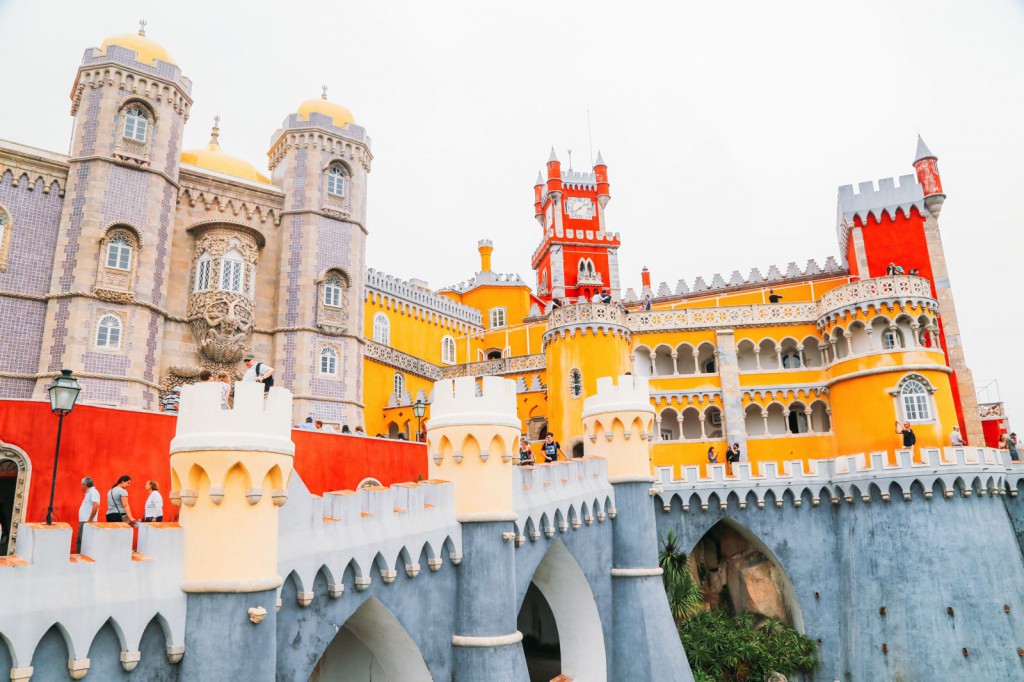
Architecture
The Pena Palace has a profusion of styles much in accordance with the exotic taste of the Romanticism. The intentional mixture of eclectic styles includes the Neo-Gothic, Neo-Manueline, Neo-Islamic and Neo-Renaissance. References to other prominent Portuguese buildings, such as the Belém Tower, are also present.
Almost the entire palace stands on rock in the Sintra Mountains. Structurally, it can be divided in four sections:
the foundations and its enveloping walls, with two gateways (one of which is protected by a drawbridge)
-the restored structure of the old convent, and the clock tower
-the Arches Yard in front of the chapel, with its wall of Moorish arches
-the palatial zone and its cylindric bastion, with interiors decorated in -the cathédrale style.
建築
佩納宮擁有豐富的風格,與浪漫主義的異域風情一致。 折衷主義風格的故意混合包括新哥特式,新曼努埃爾式,新伊斯蘭教和新文藝復興。 還有其他著名的葡萄牙建築物,如貝倫塔(BelémTower)。
幾乎整個宮殿都矗立在辛特拉山脈的岩石上。 在結構上,它可以分為四個部分:
基礎及其包圍牆,有兩個網關(其中一個由吊橋保護)
– 舊修道院和鍾樓的修復結構
– 教堂前的拱門庭院及其摩爾人拱門
– 富麗堂皇的地區及其圓柱形堡壘,內部以cathédrale風格裝飾。
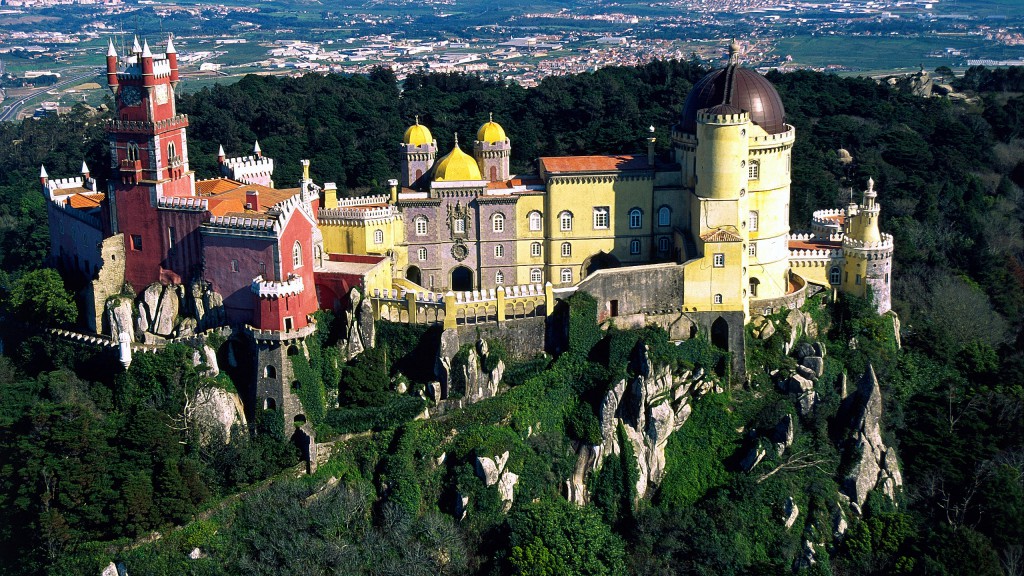
Convent section and clock tower
As many elements as possible were preserved of the remains of the Hieronymite convent including the cloister, the dining room, the sacristy, and the Manueline-Renaissance chapel. All were embedded in a new section that featured a wide terrace and a clock tower. The Queen’s Terrace is perhaps the best spot for obtaining an overall picture of the architecture of the palace. The terrace features a sundial cannon that used to fire every day at noon. The clock tower was completed in 1843.
修道院部分和鍾樓
盡可能多的元素保存了Hieronymite修道院的遺體,包括迴廊,餐廳,聖器收藏室和Manueline-Renaissance教堂。 所有這些都嵌入了一個帶有寬露台和鍾樓的新區域。 Queen’s Terrace可能是獲得宮殿建築整體景觀的最佳地點。 露台設有一個日常火砲,每天中午都會開火。 鐘樓於1843年完工。
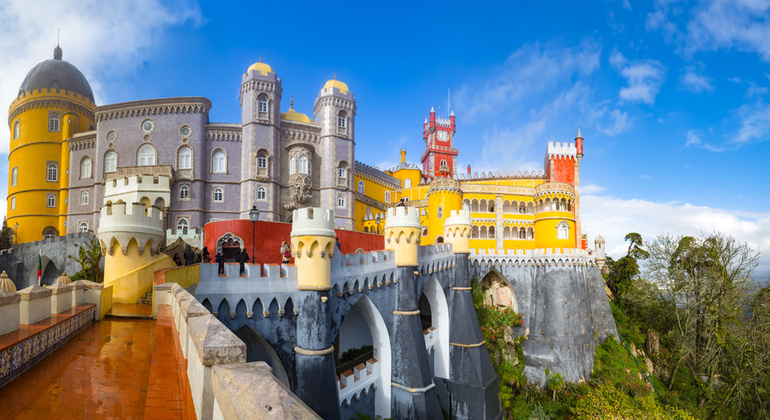
FROM:https://en.wikipedia.org/wiki/Pena_Palace
FROM:Palacio da Pena aerial view at dusk between the fog – 1440P
FROM:Palacio da Pena. Sintra, Portugal – Air Drone View
Don’t you think it’s addictive?
Want to know more about the beauty of architecture?
Come and join our members to explore the beauty of architectural design.
覺得看得不過癮嗎?
想要知道更多建築之美嗎?
快來加入我們的會員,一同探索建築設計之美。
The above article is purely for appreciation and sharing purposes, as well as the construction of new technology and the public can be in-depth understanding of the information at the same time there are sources, will be able to query, no use of the document as a commercial transaction, if illegal, please inform the We will immediately remove the site, thank you for cooperation.
以上文章純粹作為欣賞及分享用途,以及將建築新型技術傳遞給與大眾能夠深入了解,同時資料還有來源,將可查詢,絕無使用該文件資料作為商業交易行為,如有違法請務必告知該網站我們將立即處理撤除,謝謝合作。


